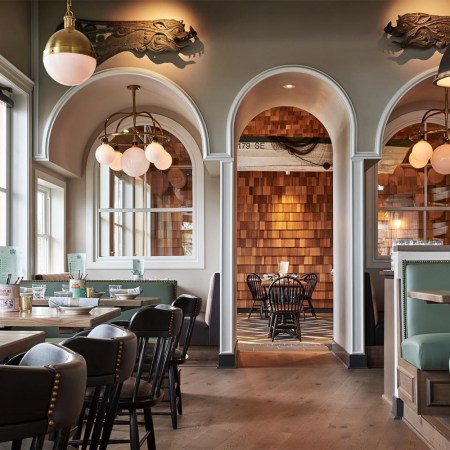Back in 2001, 95% of MLB players swung ash bats.
They were the latest in a long, proud tradition. Practically every star hitter in baseball history — from Babe Ruth to Ted Williams to Jackie Robinson to Hank Aaron — stepped into the batter’s box with an ash bat. Players coming up in the 1990s, like Derek Jeter, used them throughout the entirety of their careers, too.
But two things happened in 2002 which have permanently altered the trajectory of ash bats in American’s national pastime.
For starters, the league spent its offseason reacting to the fact that Barry Bonds had broken the single-season home run record with a maple bat. He put together arguably the greatest offensive season MLB had ever seen (.328/73/137) with a bat cut from a different block of wood than the overwhelming majority of the league. Later that June, field biologists charted the arrival of the emerald ash borer in the United States, an exotic beetle native to Asia, which likes to spend its days suffocating continental woodlands into extinction.
The ash tree has proven no match for the borer in the years since it made landfall, and it wasn’t long before the “Louisville Slugger forest,” a thick wooded area in northern Pennsylvania and southern New York, started to die off. That’s where Hillerich & Bradsby, the 167-year-old manufacturer of the world-famous Louisville Slugger baseball bats (now under the umbrella of Wilson Sporting Goods), once sourced enough lumber to build 800,000 ash bats a year.
In a recent feature in The New York Times, fourth-generation bat maker Bobby Hillerich explained that his company now makes half a million fewer ash bats a year, and only a handful for big leaguers: “We had this fantasy that [the infect infestation] was going to be containable. It was probably a few years later that we came to realize this was not going the way we thought.” As they can no longer guarantee the quality of the ash they’re felling, Hillerich and other bat manufacturers mainly sell ash bats through big box retailers; they’re purchased as props or weapons.
Meanwhile, a few ash purists (headlined by names like Joey Votto, Evan Longoria and Javier Báez) still order the wood each year. They’ll get the highest quality possible — ash with eight to 12 growth rings per inch.
As of 2014, 70% of the league had shifted to maple. A 2021 estimate has that figure up to 87%. Even if a metallic-green beetle hadn’t entered America on wooden packing material from China, Aaron Judge still would’ve broken the American League single-season home run record with a maple bat this year. The 2021 Bonds campaign was indisputable. (From an equipment perspective, at least. Obviously those statistics became contentious for other reasons.) Players throughout the league began testing maple bats for themselves, and steadily agreed that they were firmer, denser, less likely to break, more likely to send the ball a mile.
As players have spent the 21st century trying to hit more home runs anyway, prioritizing launch angle, exit velocity and revamped strength-training programs, it makes sense that players of all sizes and styles came to adopt a “heavier” bat — maple bats are heavier than their ash equivalents due to the denseness of the wood.
Indeed, why would any ballplayer opt for an ash bat in this day and age? Well, it might help to look at the performance of another major leaguer in 2001. While Bonds won the NL MVP with 73 homers and a maple bat, Ichiro Suzuki won the AL MVP with 242 hits and an ash bat. The lighter, softer ash bat is believed to offer more flexibility upon impact, yielding more control to the hitter, who can maximize his bat speed and spray the ball all over the field — something Ichiro did as well as any batter in history.
Check out this description for the Louisville Slugger P72 Ash Bat, which belonged to Jeter, a similarly opportunistic, all-fields hitter: “‘White ash (Fraxinus americana) is a ring-porous species, which means that in each year of growth, there are clear concentrations of large earlywood cells, and then an abrupt transition to smaller latewood cells.’ Those pores that you can see with your own eyes give Ash less density and more flex than a Maple. The Ash complimented Jeter’s abilities. It’s lighter, giving him a quicker swing so he could stay on a pitch for longer, and because of the flex he was able to poke those outside pitches an instant before they dove out of the zone. Jeter’s not the only 3000 hit club member to use the P72.”
Some researchers are unconvinced that maple and ash pose much of a scientific disparity in performance; the idea being the heavier maple bat leads to slower swings, so it all evens out. (Surely a supersized alien like Aaron Judge, who regularly hits a ball over 115 miles per hour, breaks that paradigm, though.) If there’s some truth to ash bats offering more flexibility and contact, though, that might be one way for players to shake up the modern game, which detractors say boils down to a festival of strikeouts and home runs.
If more orders for ash bats come in soon, sporting manufacturers will need the efforts of forest health specialists to prevail over the greedy beetles. How do you beat the emerald ash borer? With a parasitoid wasp, apparently. The predators have been released into the woods of baseball bat country over the last few years, with results to follow. Until then, we’re left to sit back and enjoy the crack of the bat — with an appreciation that it sounds a little bit different than it used to.
Thanks for reading InsideHook. Sign up for our daily newsletter and be in the know.


















